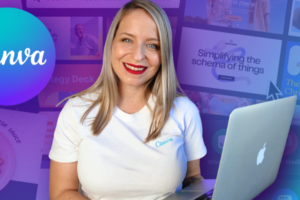Clock Application Design in Figma – Free Udemy Courses
Project for application design
What you’ll learn
Clock Application Design in Figma – Free Udemy Courses
- Ux/Ui
- Application design
- Project making
- UX/UI project
Requirements
-
Figma basics
Description
In business, things change quickly. Trends come and go; tools wax and wane. Companies have to stay abreast of trends and constantly innovate to survive. InVision was once an industry darling, enjoying rapid user growth, strong market momentum, and an almost $2 billion valuation. Three short years later, it’s almost a relic.
In 2017, InVision was the top prototyping tool, with 60% of UXTool survey respondents indicating they used it. Only three years later, their user share fell to 23%, with more than half of those people only using it as a secondary tool. In contrast, Figma has seen an explosion of growth and popularity, rising from about 8% of respondents using the tool in 2017 to about 57% in 2020.
What’s propelling Figma’s success?
Leadership understands and values Design
- Fitting for a company building a design tool, Figma’s leadership understands the value of design. Their VP of Product is very design-oriented and laser-focused on Designers’ needs.
- They understand that thoughtful design is a competitive advantage. Apple, Amazon, and Airbnb have all enjoyed wild success based on their design focus and customer obsession.
Focusing on product purpose
- Figma has worked to deeply understand users’ needs and context and then built a holistic solution to address them.
- A Lead Designer reflects on life before Figma “To give you an idea, at the time I used 3 different tools to manage, update and keep track of the designs. I would start in Abstract where each version of my files was stored safely. I would then open my files in Sketch to do the design work. And finally, I would export the designs to Zeplin where developers could get the assets and other information needed for the implementation.” Seeing opportunities for improvement, Figma redefined the design tool ecosystem.
Understanding and addressing how people work
- Additionally, Figma understands that designing is a collaborative process, involving a variety of stakeholders. To accommodate how people work, they’ve focused on enabling seamless cross-functional collaboration.
- A Web Designer and Developer explains “Building for everyone in the design process and not just designers are also the foundation of Figma’s core loop, which drives their growth and compounding scale.”
So, what can we learn from these two companies?
Companies need a clear product purpose and strategy
- A clear and compelling product purpose is a must. Your product needs to address a real user need, and you’ll likely need to adjust your scope and strategy over time.
- The tricky part is maintaining focus while adjusting to emerging trends and market shifts. You need to be open to addressing newfound gaps and opportunities, while still staying focused and strategic in your execution. Unfortunately, no one said building an amazing, long-lasting business is easy…
Focus on outcomes, not features
- You need to deeply understand your users and their holistic needs and goals. Identifying major unmet needs, frustrations, workarounds, and pain points are ripe opportunities for innovation and disruption.
- Additionally, you need to consider the wider ecosystem of your users — exploring how they interact and collaborate. While you likely have a primary type of user, who else touches your product? Who else could benefit from it? How can you improve their lives and processes as well?
Success requires relentless innovation
- If you enjoy early success, you can’t stop and bask in your glory indefinitely. You should celebrate your success, and then put your head down and stay true to the product focus and human-centered design practices that got you this far.
- Companies such as Blockbuster, Polaroid, and Toys R Us failed to innovate, and they all paid the price.
Companies must adapt and rapidly learn from feedback
- Companies must regularly review and respond to market and customer feedback regarding pricing, revenue, market share, product needs, competitors, etc.
- You can’t put your head in the sand and blindly execute your strategy without regard for incoming data points. On the other hand, you need to look for patterns and trends in the feedback — you don’t want to drastically change course every week based on a single data point.










